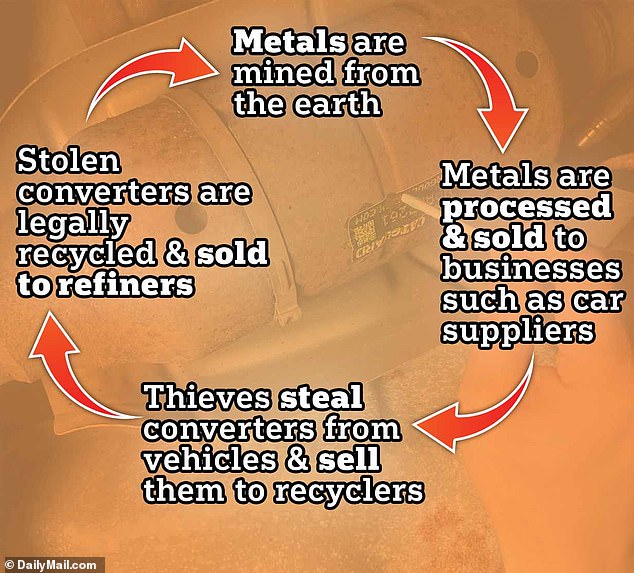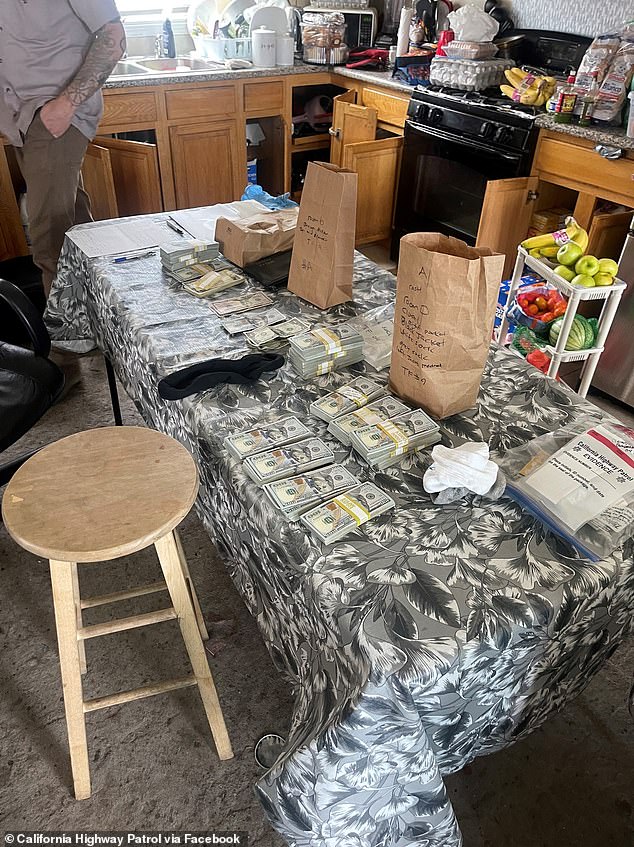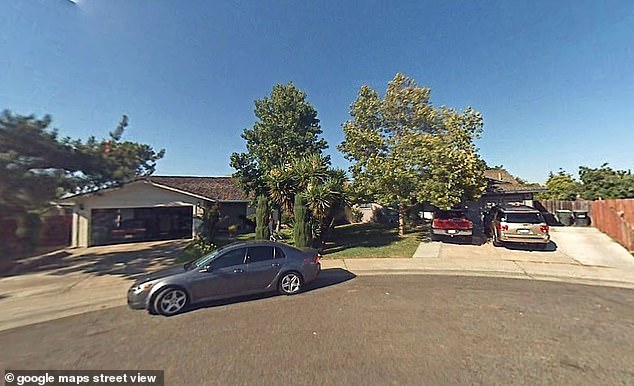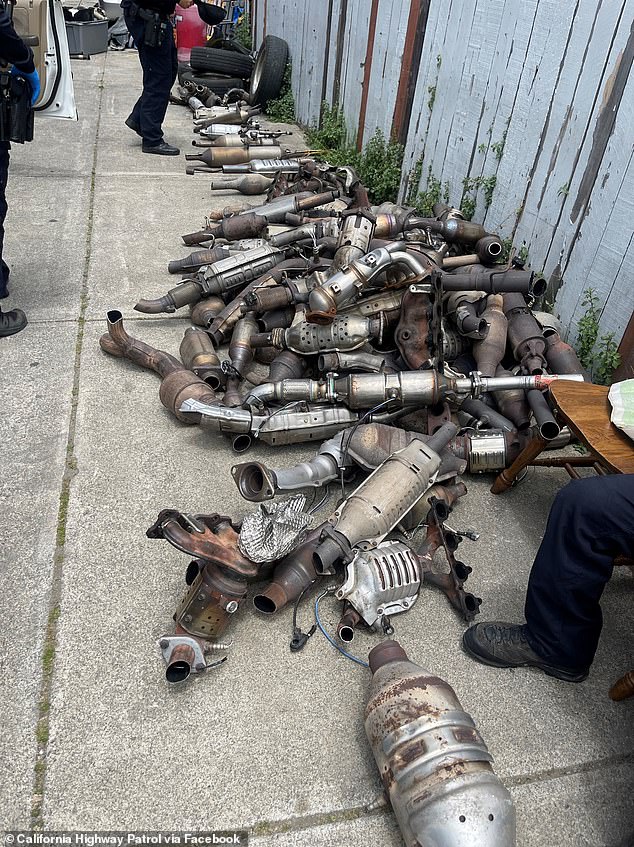The billion dollar reason YOUR catalytic converter was stolen: How underground crime rings steal 600,000 converters a year, recycle them and sell them BACK to metal refineries
It is believed that motorists lose approximately 600,000 catalytic converters to thieves every year. But have they ever wondered where the devices end up?
For years, mystery has shrouded the widespread theft of car parts – which are designed to reduce the amount of harmful pollutants a vehicle emits and are made of precious metals such as rhodium, platinum and palladium.
A new investigation has put an end to the multi-billion dollar business of catalytic converter theft, which are stolen by crime gangs, recycled and sold back to the people who produce the devices for car makers.
It results in an endless cycle of metals being mined and sold to automotive suppliers, only to be stolen by thieves, recycled and sold back to metal refineries.
According to the New York Timesstolen catalytic converters are passed on through “middlemen, smelters and refineries in the United States and abroad.” They can be stolen in a minute and cost about $1,000 to replace.
Figures show that motorists lose approximately 600,000 catalytic converters to thieves every year

A new study has dismantled the billion-dollar theft epidemic of catalytic converters stolen by crime gangs, recycled and sold back to the people who produce the devices for automakers.
The report notes that quantifying catalytic converter thefts can be difficult.
Howard Nusbaum, administrator of the nonprofit National Salvage Vehicle Reporting Program, said NYT that approximately six percent of the twelve million catalytic converters recycled each year are believed to be stolen.
The outlet estimates that this leads to the devices being stolen from 600,000 cars every year. Most cars are equipped with one inverter, but cars with a dual exhaust system require two. Larger vehicles such as SUVs and trucks may have more than two.
The devices became a staple of American cars after Congress passed the Clean Air Act in 1970 in response to growing concerns about pollution and air quality.
The law included a provision requiring all vehicles produced after 1975 to greatly reduce pollutants.

In October, a family claiming to run an “auto repair shop” out of their single-story suburb in Sacramento, California, admitted it was a key supplier in a $600 million conspiracy to smuggle stolen catalytic converters.

The house in suburban Sacramento that the family posed as an auto repair shop
Researchers at Engelhard Corporations, a metal processing company in New Jersey, discovered that platinum group metals can catalyze or convert pollutant fumes into less harmful forms. The metals are also recyclable.
Although each converter contains only a small amount of valuable metal, a thriving underground network seized the opportunity to steal it from the millions of cars on the road.
Catalytic converter theft rose 1,200% nationwide in the two years after 2019 as the price of precious metals soared on international markets.
But recent reports suggest they may finally be falling. In October, insurance company State Farm said it had received 14,500 claims for stolen converters in the first half of the year, compared to 23,000 in the same period last year.
In October, a family claiming to run a “car repair shop” from their single-story suburban home admitted to being a key supplier in a $600 million conspiracy to smuggle stolen catalytic converters.
Brothers Tou Sue Vang, 32, and Andrew Vang, 28, along with their mother, Monica Moua, 58, were paid $38 million for the valuable car parts that opportunistic thieves brought to their home in Sacramento, California.
The family shipped them to DG Auto in New Jersey, which made $600 million from extracting the precious platinum, palladium and rhodium contained within. According to authorities, DG Auto became one of the largest buyers and sellers of stolen catalytic converters in the country.
Customers could pay $29 per month for the “Platinum Package,” which allowed them to submit photos of the devices to get an estimate of their value.

More than a third of catalytic converters stolen in the US come from cars in California
DG would then alert users when the cost of metals increased. In March 2022, it told users: “Palladium breaks $2,900, reaching its highest price since June 2021,” according to the NYT.
The confusing supply chain of catalytic converter thefts has made it increasingly difficult for lawmakers to track them.
Lee Hockey, a consultant who previously worked at specialty chemicals company Johnson Matthey, told an International Precious Metals conference in Orlando: “Most people in this room will see petty theft and say, ‘Oh, we’re not involved in that. ‘
‘But that’s everyone. If you are a refiner, you get the metal even though you are dealing with a smelter, so you are liable.
‘If you are an insurer and you insure people on the site, you are liable.
‘If you analyze the sample, you are liable. You are part of the chain and involved.’
